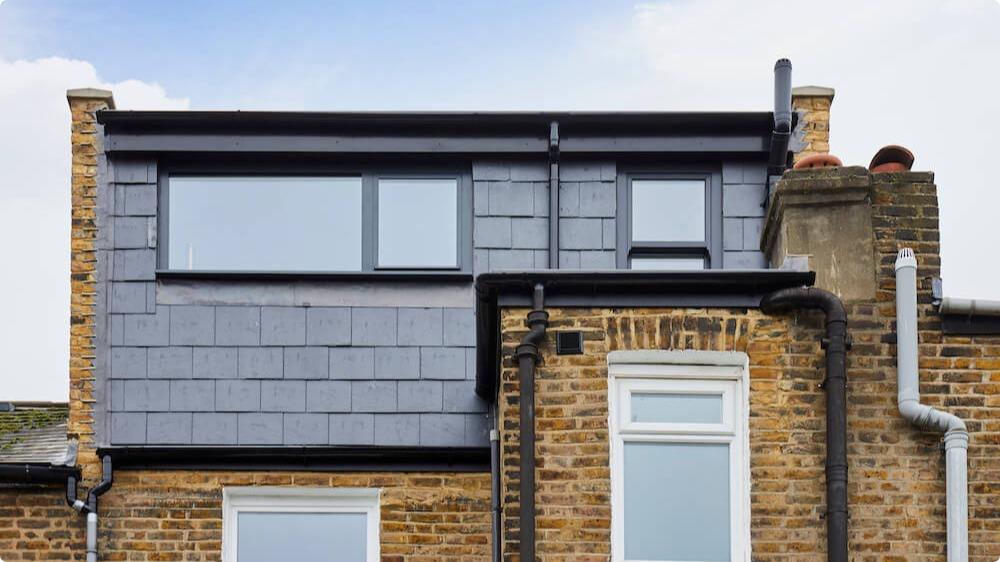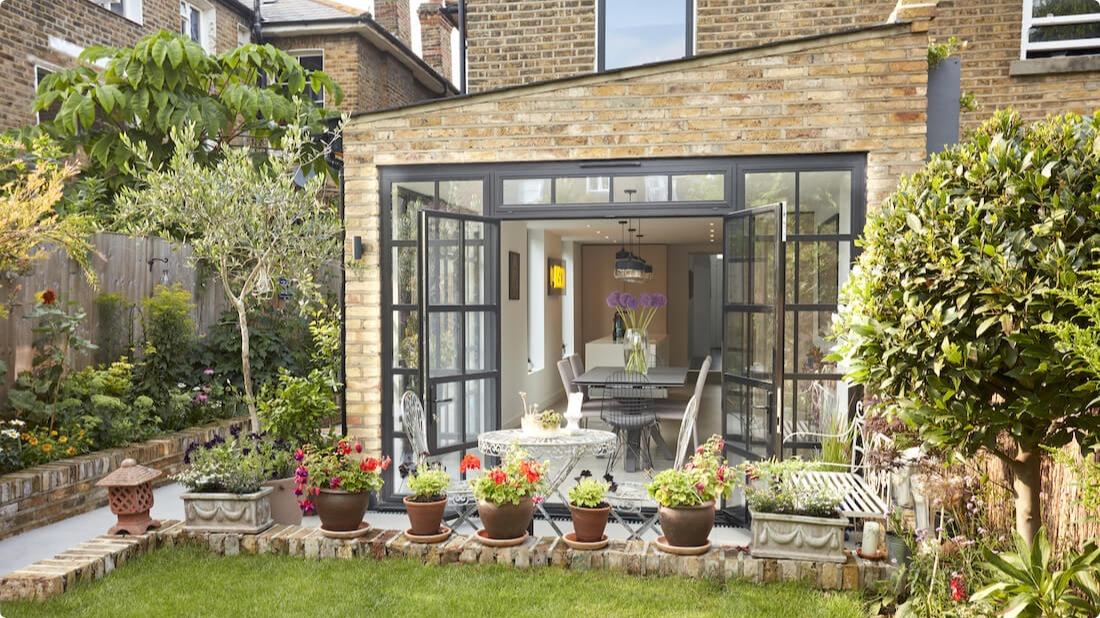If you need bigger living quarters but would rather not move out of your present home, you should consider adding an extension instead.
Adding an extension will save you the stress of house hunting and all the hassle that comes with moving into a new home. Opting for an extension also gives you complete autonomy to decide on the function of this extra space per your family’s needs.
There are numerous home extension ideas and design types to choose from. You could go for a side infill extension, if you’ve got some unused space at the side of your home, or opt for an over-structure extension, if extending your first floor if you want to keep your green space intact.
This post will explore different house extension designs and ideas, including…
- Single storey extensions
- Double storey extensions
- Side infill extensions
- Over-structure extensions
If you've already an idea of the extension you'd like, you can get a free Resi quote here.
Single storey extensions
Single storey extensions are made up of one level and are usually added to the rear or side of the property - or both, in the case of wraparounds.
They're an ideal way to create valuable extra space in your home. With a single storey extension, you can expand your kitchen to include a dining area and living space. You can also create additional rooms such as a utility room, home office, or ground floor guest bedroom.
There are many options in terms of style and design that can completely change the exterior of your house. You can opt for bi-folding doors to help connect the house to the garden so that cool air floods the space on hot days.
Over-structure extensions
Over-structure extensions are built over the top of an existing structure, most commonly a garage, and are great when you want to extend your home but would like to preserve your garden space. They also are an excellent way to extend your first floor and can be used to add an extra bathroom, a study, a utility room, or a lounge.
However, it’s worth bearing in mind that, as the name suggests, this kind of project requires a lot of structural calculations. You’ll not only need to worry about your extension, but an engineer will need to make sure the structure below can carry the extra weight. These technical hurdles can, therefore, impact the price.
Two storey extensions
Two storey extensions allow you to extend upwards of what would normally be a single storey extension. They provide you with double the living space of a single storey and can be built at the back or side of the house.
Double storey extensions are surprisingly cost-effective, as the cost per square metre tends to be lower than their single storey counterpart. Of course, most two-storey extensions tend to be quite sizeable, so though you’ll get more space for your budget, this will still need a sizeable investment.
Alongside this, thanks to 2020 permitted development changes, you may not need a full planning application provided you build within permitted development criteria.
Rear extensions
Just as their name implies, rear extensions are situated at the back of your property, extending onto your existing garden or courtyard. They’re mostly used to create larger open living spaces and blend the indoor/outdoor space.
Side return extensions
You can put the pathways running down the sides of your home to good use by constructing a side return extension.
Side return extensions (also referred to as side infills) allow you to transform the unused alley-away space into a much-desired living area.
They are a fantastic way to extend your home, utilise wasted space, and improve your overall living experience.
With side returns, you can make productive use of dead space and still retain your garden area. You’ll enjoy not only a bigger kitchen but also a brighter, lighter open living space.
Wraparound extensions
Wraparound extensions combine a side return and rear extension to form an 'L-shape' at the back of your property.
It is most commonly suitable for Victorian terraced homes, due to the presence of alleyways, but can also be used for modern homes, if space is available.
They're excellent for extending your living area and creating substantial open plan layouts, opening up your kitchen area to allow space for new rooms while improving your connection to your garden.
Though wraparound extensions will likely require a full planning application, you shouldn't let that put you off. The planning application doesn't have to be a scary process, especially if you have an experienced designer by your side. Professional advice and guidance will go a long way in easing the process and increasing your chances of being approved on your first try.
You should discuss your project with a Resi expert. Our in-house planning team can help you handle your planning application from start to finish. We’ll put together the necessary drawings and everything else you need to increase your chances of being approved on your first application.
Dormer extensions
If you’ve unused space in your attic, then a dormer extension might just be perfect for you.
A dormer extension removes the roof’s pitch and creates a flat roof in line with the top of the already existing pitch. Thanks to this, you get a box space perfect for a master bedroom with ensuite bathrooms or additional room for the kids’ bedroom or playroom.
These extensions usually come under your permitted development rights, hence you may be able to forego needing a full planning application. Not only this, these types of loft conversions are an affordable way of creating a whole new storey of space.

Basement and cellar conversion
If you need more space and have a basement or cellar, then a basement conversion should top your list. This type of extension is particularly popular in densely packed areas like London.
Although the extra room can considerably boost the value of your home, it can be pretty costly - especially if you plan on retrofitting additional space.
We recommend you weigh the extension’s cost against the ceiling price for similar homes in your neighbourhood. This way, you can be sure you won't be running at a loss if you ever decide to sell your home.
Orangery extensions
Orangeries combine elements of a conservatory with that of traditional extensions. They’re usually designed with brick-made pillars and raised glass roof structures that flood the inside space with natural light, making it feel more open-plan than the average extension.
They’re versatile, can be used as a dining room, playroom, living room, or office. Just make sure you invest in high-quality glazing to mitigate any greenhouse effect, whereby the space becomes too hot in summer and too cold in winter.
Conservatory extensions
Conservatory extensions are an excellent way to create a little extra space. They are typically glass built and were originally designed to encourage the growth of indoor plants.
They can be constructed to blend with the brickwork and structure of your home, are available in all shapes and sizes, and can be built to match your specific taste or idea. They’re also very versatile and can be used as the perfect space for entertaining guests.
While conservatories can be very cost-effective, due to their uPVC frames and the fact they can be constructed mainly off-site, you should be aware that poor quality conservatories can actually harm the value of your home. To avoid this, you might want to consider investing in high quality materials, such as timber or aluminium frames.

Garden room extensions
Garden room extensions are garden buildings detached from your home. They are often semi-glazed buildings with tiled roofing, as opposed to glass.
They are a unique way to utilise extra space at home and can be suited for multiple functions such as a music room, dance studio or even an office.
While garden rooms can be erected under your permitted development rights, you should bear in mind that usage will change the planning and building rules your space will be subjected to. If you plan on using your garden room as a bedroom, you’ll face much tougher scrutiny and will likely need a full planning application.
Porch extensions
If you need a simple yet stylish way to transform the front of your property, then you should consider getting porch extensions.
Porch extensions are an incredible way to redesign a plain frontage, improve your security, and add extra family space.
Most porches are fully glazed or designed with glass roofs to improve the amount of natural light coming into your home. Constructing a front porch usually takes an average of 4 weeks.
Most common roof extension types
Roof extensions are typically classified into pitched roofs and flat roofs. While pitched roofs are more durable, flat roofs are more cost-effective and generally seen as more modern.
Pitched roof
Pitched roofs are traditionally designed and so blend better with traditional houses. They give you more height, offer more features such as beams and a sloping ceiling, and are well known for their longevity and durability.
Due to their design, they are easy to maintain and are more reliable when it comes to drainage. However, they are more expensive than flat roofs and take longer to install.

Flat Roof
Flat roofs offer a more contemporary and modern spin to extension roof designs. As a result, they fit in perfectly with more recent designs.
They’re perfect for installing roof lights and, with proper planning permissions, can be turned into a verandah or roof garden.
One major concern with flat roofs is their durability and tendency to collect water. Still, these can be corrected by adding a slight pitch to the roof and using quality materials for the construction.
Still, flat roofs are cheaper and easier to construct than their counterparts.
If you’ve decided on the extension you’d like but aren’t sure how to go about it, you should get in touch with us.
At Resi, we offer homeowners looking to extend their homes an all-in-one solution. We can help you actualise your dream extension, from the design stage to planning permissions and financing solutions; our team of experts are here to make the entire process easier.
For more information on our financing option, please go here.
You can also use our calculator to find out how much your project will cost.
























